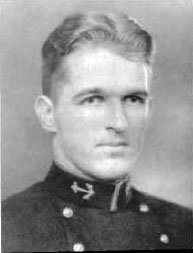Celebrating a Spanish Civil War hero
Frank Tinker, the Arkansas-born pilot who became the most famous American mercenary in the Spanish Civil War, will be honored on the centennial of his birth at a ceremony in De Witt, Arkansas, on July 11. The event is being organized by Tinker’s niece, Marcia Tinker Morrison, and the Grand Prair…
Frank Tinker, the Arkansas-born pilot who became the most famous American mercenary in the Spanish Civil War, will be honored on the centennial of his birth at a ceremony in De Witt, Arkansas, on July 11. The event is being organized by Tinker's niece, Marcia Tinker Morrison, and the Grand Prairie Historical Society.
Tinker's fame came largely from his memoir of the war, Some Still Live, published in 1938 and serialized in the Saturday Evening Post. When the fighting began in 1936, he confessed, "I was not quite sure which side was fighting for what. I gathered that each was slaughtering the other for being or doing something that the other side did not like."
He volunteered for the Republican side loyal to the left-wing government, and soon found himself at a training center near Guadalajara, where he and fellow American pilots Whitey Dahl and Jim Alllison were introduced to the Russian-built Polikarpov I-16 monoplane, nicknamed the Mosca—the most advanced fighter aircraft in the world. Tinker recalled this exchange with the commander of the Russian squadron, "Captain Ramon":
Tinker's fame came largely from his memoir of the war, Some Still Live, published in 1938 and serialized in the Saturday Evening Post. When the fighting began in 1936, he confessed, "I was not quite sure which side was fighting for what. I gathered that each was slaughtering the other for being or doing something that the other side did not like."
He volunteered for the Republican side loyal to the left-wing government, and soon found himself at a training center near Guadalajara, where he and fellow American pilots Whitey Dahl and Jim Alllison were introduced to the Russian-built Polikarpov I-16 monoplane, nicknamed the Mosca—the most advanced fighter aircraft in the world. Tinker recalled this exchange with the commander of the Russian squadron, "Captain Ramon":
RAMON: Have you ever seen planes like those before? JIM: Segurrissimamente. (Why, certainly.) WHITEY: Hell, yes. (Whitey had actually flown our American P-26 model while in the American Army.) MYSELF: Sí, sí. (My Spanish was still a little weak.) RAMON (looking slightly surprised): Do you think that you could fly them? WHITEY: Oh, I flew planes like this about three years ago. RAMON (looking astonished): What! JIM: Yeah, they're a little antiquated, but I suppose we could learn to fly the things again.... ....RAMON: These planes are the most modern fighting planes in the world. THE THREE OF US: Aw, bologny (or its equivalent); we've seen the same things in the United States at least five years ago. ALL RUSSIANS: !*%&@_#$&%****! (may be translated as general disbelief).Tinker spent just six months in Spain, shooting down eight enemy planes before returning home in July 1937. Author Carl Posey, who wrote about Spanish Civil War pilots in our May 2009 issue, tells what happened then:
Tinker earned a bit of fame and fortune with his memoir, along with a law suit from former comrades who didn’t like his characterization of them. Some Still Live ends with a lament: Having been rejected by the Army Air Corps, Tinker wrote “I suppose there is nothing left except to follow Horace Greeley’s advice and go West.” He meant China. In the event, he only got to Arkansas. On June 13, not three months after the war in Spain ended, Tinker was found dead in his room in Little Rock’s Hotel Ben McGee, shot in the head with a .22 pistol. He was 29.Tinker's apparent suicide saddened and puzzled friends like Ernest Hemingway, who as a war correspondent had hung out with him and other American pilots in Madrid. Written on Tinker's tombstone is this epitaph in Spanish: "Quien Sabe" (Who Knows). Read more about Tinker here.
